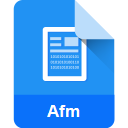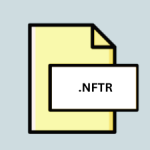.SUIT File Extension

Macintosh Font Suitcase
| Developer | N/A |
| Popularity | |
| Category | Font Files |
| Format | .SUIT |
| Cross Platform | Update Soon |
What is an SUIT file?
.SUIT files are associated with Macintosh Font Suitcase, which is a file format used to store fonts on Macintosh computers. These files contain font data that can be accessed and utilized by various applications on the Mac platform.
More Information.
Macintosh Font Suitcase files were introduced to simplify the management of fonts on Macintosh systems. They allowed users to group multiple font files into a single container for easier organization and distribution.
Origin Of This File.
The .SUIT file extension originated from Apple’s Macintosh operating system as a means to organize and manage fonts for use in desktop publishing and graphic design applications.
File Structure Technical Specification.
.SUIT files typically consist of one or more TrueType or PostScript font files bundled together. They may also include additional metadata such as font names, styles, and copyright information. The exact structure and technical specifications may vary depending on the version of the Macintosh operating system and the font management software used.
How to Convert the File?
Windows:
- Install a font management software compatible with Windows, such as FontForge, FontBase, or NexusFont.
- Open the font management software and locate the .SUIT file you want to convert.
- Use the software’s conversion feature to convert the .SUIT file to a compatible font format such as TrueType (.ttf) or OpenType (.otf).
- Save the converted font file to your desired location on your Windows system.
Linux:
- Install a font management software or font conversion tool compatible with Linux, such as FontForge or TransType.
- Open the font management software or conversion tool and import the .SUIT file you wish to convert.
- Use the software’s conversion function to convert the .SUIT file to a supported font format like TrueType (.ttf) or OpenType (.otf).
- Save the converted font file to your desired location on your Linux system.
Mac:
- Macintosh systems natively support .SUIT files, but if you need to convert them, you can use font management software like Font Book or Typeface.
- Open the font management software and import the .SUIT file.
- Utilize the software’s export or conversion feature to convert the .SUIT file to a compatible format such as TrueType (.ttf) or OpenType (.otf).
- Save the converted font file to your preferred location on your Mac.
Android:
- Transfer the .SUIT file to your computer.
- Use font conversion software compatible with your operating system, such as FontForge or TransType, to convert the .SUIT file to a supported format like TrueType (.ttf) or OpenType (.otf).
- Transfer the converted font file back to your Android device.
- Install a font management app from the Google Play Store and import the converted font file into the app.
- Follow the app’s instructions to install the font on your Android device.
iOS:
- Transfer the .SUIT file to your computer.
- Use font conversion software compatible with your operating system, such as FontForge or TransType, to convert the .SUIT file to a supported format like TrueType (.ttf) or OpenType (.otf).
- Transfer the converted font file to your iOS device using iCloud Drive, email, or a file-sharing app.
- Open the font file on your iOS device and follow the prompts to install it.
- Once installed, the font will be available for use in compatible apps on your iOS device.
Others:
For other operating systems or platforms, follow similar steps as outlined for Windows, Linux, Mac, Android, or iOS, depending on the availability of font management software or conversion tools compatible with the respective system. Utilize third-party software to convert the .SUIT file to a compatible font format and follow system-specific procedures to install or use the converted font files.
Advantages And Disadvantages.
Advantages of .SUIT files include:
- Simplified font management: Fonts can be organized and accessed from a single file.
- Easy distribution: Fonts can be shared and transferred as a single package.
- Compatibility: .SUIT files are compatible with various Macintosh applications and operating systems.
Disadvantages may include:
- Limited compatibility: .SUIT files may not be fully compatible with non-Macintosh systems or applications.
- Limited flexibility: Font files stored within .SUIT files cannot be easily accessed or modified individually.
How to Open SUIT?
Open In Windows
.SUIT files are primarily designed for use on Macintosh systems and may not be directly compatible with Windows. However, some third-party font management software for Windows may offer limited support for opening and managing .SUIT files.
Open In Linux
Linux operating systems may not natively support .SUIT files. Users may need to use third-party font management tools or conversion utilities to work with .SUIT files on Linux.
Open In MAC
.SUIT files can be opened on Macintosh computers using built-in font management utilities or third-party font management software. Users can simply double-click on the .SUIT file to load its contents into the system’s font library.
Open In Android
Android operating systems do not natively support .SUIT files. Users may need to convert .SUIT files to compatible font formats such as TrueType (.ttf) or OpenType (.otf) before using them on Android devices.
Open In IOS
iOS devices do not natively support .SUIT files. Users may need to convert .SUIT files to compatible font formats such as TrueType (.ttf) or OpenType (.otf) before using them on iOS devices.
Open in Others
Compatibility with other operating systems or platforms may vary. Users may need to use specialized font management software or conversion tools to work with .SUIT files on non-Macintosh systems.













